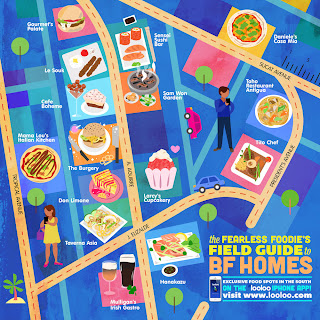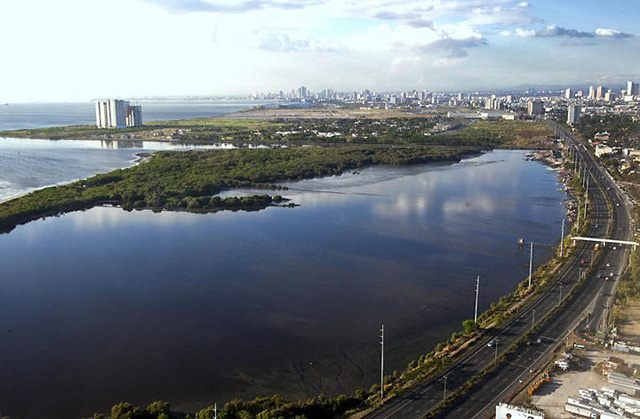Hi guys...
Been planning and fixing this blog
since June 2011, but I always lack the time to take time to do my first post. So
well after a year... TADA! (in a Despicable Me minion tone) Besides having the
time I really, really don't know how to start this blog. I've been a TRAVEL
BLOG FAN, lurking around for some travel information and tips. So to start one
takes a lot of courage.
So what way to start this blog, but to
show the world around first in my HOME. So yes, this first post is all about my
HOME, THE SOUTH OF METRO MANILA, PHILIPPINES.
So to start off this journey may I
introduce to you first Metro Manila
Metro Manila is Part of the National
Capital Region of the largest & Northernmost island of the Philippines,
Luzon. It is composed of Cities of Caloocan, Las Piñas, Makati, Malabon,
Mandaluyong, Manila, Marikina, Muntinlupa, Navotas, Parañaque, Pasay, Pasig,
Quezon City, San Juan, Taguig,Valenzuela, as well as the Municipality of
Pateros. Manila is treated as the Capital of Metro Manila since most of the
historical sites with great significance is seen here.
As I have mentioned earlier we shall
focus on the Southern portion of the Metro, and that is Muntinlupa, Las
Piñas & Parañaque
The South is usually known to others as
the laid back Cities of the Metro since most of the night life happens in the
North. Well most of that is a bit changing due to the fast paced progress &
economic growth of the South.
Let's start with my hometown,
Parañaque.
Parañaque was first called Palanyag, which generally means "my beloved", this best describes their affection for their hometown. Another version came from the combination of the terms "palayan" and "palalayag", the former meaning ricefields of which the city once abounded in and the latter pertaining to the sailing and fishing
occupation of many of its residents.
occupation of many of its residents.
According to oral tradition, the term Parañaque was coined when a Spanish soldier told the driver of his caruaje or horse-drawn carriage, to "Para aqui, para aqui (Stop here, stop here)!" The driver, uncomprehending, kept on prodding his horse to go on while the soldier angrily repeated his instruction: "Para aqui, para aqui!" Onlookers just laughed as the Spaniards empathically said "para aniya aqui para aniya aqui (he said 'stop here' he said 'stop here)." For days the incident was repeated around and term "para aniya aqui" stuck.
Main source : DULCE FESTIN-BAYBAY, Author of the first comprehensive history of Parañaque, courtesy of Parañaque's City Information Office. (copied from: http://www.oocities.org/palanyag/)
| Parañaque has 2 districts, both with 8 Barangays each. Parañaque is rich in culture and is known for its variant cultures and migrants from all over the country. It is also a crossroad of diverse religions. and is home to the National Shrine of Our Mother of Perpetual Help (popularly known as Baclaran Church), known to be the most attended church in Asia, which is run by the Redemptorist fathers |

Just beside the Church is the famous Baclaran Market which is the counterpart of Manila's Divisoria. Here one could buy clothes, accessories, toys, and all dry goods you can think of. You can have a printed shirt for only Php 50 (less than $1) and still bargain for a lower price especially if you wish to buy in bulk. One precaution though make sure your belongings are always secure and always be mindful of them. And it's better to have a local tag
along with you so you can haggle more and also to avoid getting lost. Avoid also going on Wednesdays since devotees of Baclaran Church come not just for their novenas but also to buy some stuff from the market.
Parañaque also has its shares of malls and the most popular ever since would probably be the Duty Free Fiesta Mall. It has been judged as among the finest duty-free shopping concerns in the world while its item prices are usually lower than those in its counterparts as an adjustment to the lower cost of living in the Philippines. The whole Sucat Road stretch also houses 2 SM (Shoemart) Malls and another SM Mall in Bicutan. This city also contains one of the south's largest villages, BF Homes. It's entrance President's Ave. is a long stretch of commercial establishments with a lot of restaurants, fast foods and even fine dining. As you pass through the gates you'll find yourself thinking if it is the continuation of President's Ave, but actually it's another street, A. Aguire. The whole stretch is full of restuarants, cafe's, bars, KTVs. Whatever you're looking for it's surely here!
Now let's see my second home, Muntinlupa City. I call it my second home because I spent 10 years of growing up in this City since I studied and learned life's lessons here and now I am continuing to serve this community.
So before I get sentimental, why the
name? The history of the name “Muntinlupa” comes from
at least three stories. First, its association with the thin topsoil in
the area. Second, residents, purportedly replying to a question by Spaniards in
the 16th century what the name of their place was, said “Monte sa Lupa”—apparently
mistaking the question for what card game they were playing. Third, the
topographical nature of the area, where the term Monte or mountain was
expanded to Muntinlupa or mountain land. Muntinlupa is an old term that refers
to a barangay hence called as Munting Lupa (which means a smaller branch
of a city or a municipality, often referred to a county) now known as the Población.
It
is also divided into 2 districts, the first with 4 Barangays and the second
with 5 Barangays. Muntinlupa also has its shares of historical landmarks Such
as the JAMBOREE
LAKE, MEMORIAL HILL, THE DIRECTOR`S QUARTERS, THE JAPANESE GARDEN CEMETERY
& the famous BUREAU OF CORRECTION ADMINISTRATION BUILDING (New Bilibid
Prison/ Munti) That's why most people when you mention Muntinlupa would ask
"Sa loob o sa labas (Inside or Outside)?" (Meaning if you're from INSIDE the correctional or OUTSIDE)
source: www.muntinlupacity.gov.ph
source: www.muntinlupacity.gov.ph
The old & the present New Bilibid Prison
The irony of life is somewhat visible, because despite of the presence of the correctional being located in this City, the richest Southerners are also housed by this City. The exclusive village Ayala Alabang is located in the heart of this City, Alabang and is somewhat like the smaller version of Makati City (the central business district). What is outstanding here in Muntinlupa is the boom in development this City is currently experiencing. With 3 distinct malls, a couple of business buildings, a lot of call centers, hotels being sprouting one by one, tertiary hospitals, exclusive villages, exclusive schools, Muntinlupa is definitely a miniature Makati.
 |
| Festival Supermall |
 |
| Alabang Town Center |
One can enjoy luxury by checking in in one of the hotels around muntinlupa and prepare one's wallet for shopping! With the finest stores and world renowned restaurants, you will definitely splurge into luxury when heading into Alabang Town Center. Though it has high end stores and restos, it still has that laid back nature-loving feel. If you are for a twist, try going instead to Festival Supermall, it surely would make your afternoon fun with all the amusement park attractions it has inside the mall with the train ride at the heart of it. Around the mall you'll find stores both high end & bargain stalls and even medical clinics and services.
If you're into fitness try catching
some marathons around the Filinvest Area or even just jog around the area and
take a sumptuous breakfast in any of the restaurants you might bump in the
area.
Lastly, the City well known for having
the historical and world renowned Bamboo Organ, Las Piñas.
 |
| Nature Church |
Between the boundaries of Las Piñas
& Parañaque, the Critical Habitat and Eco-tourism Area
covers a total area of 175 hectares along the coasts of the two cities. It consists of around 30 hectares of 8 species of mangroves and 113 hectares of mudflats. These mangroves and mudflats are roasting and feeding grounds for 27 species of threatened rare and uncommon water birds. Around 5,000 individuals of migratory birds had been observed in the area in the 2004 census of the Department of Environment and Natural Resources (DENR) and the Wild Bird Club of the Philippines (WBCP).
covers a total area of 175 hectares along the coasts of the two cities. It consists of around 30 hectares of 8 species of mangroves and 113 hectares of mudflats. These mangroves and mudflats are roasting and feeding grounds for 27 species of threatened rare and uncommon water birds. Around 5,000 individuals of migratory birds had been observed in the area in the 2004 census of the Department of Environment and Natural Resources (DENR) and the Wild Bird Club of the Philippines (WBCP).
sources:
http://www.visitmyphilippines.com & http://laspinascity.gov.ph






